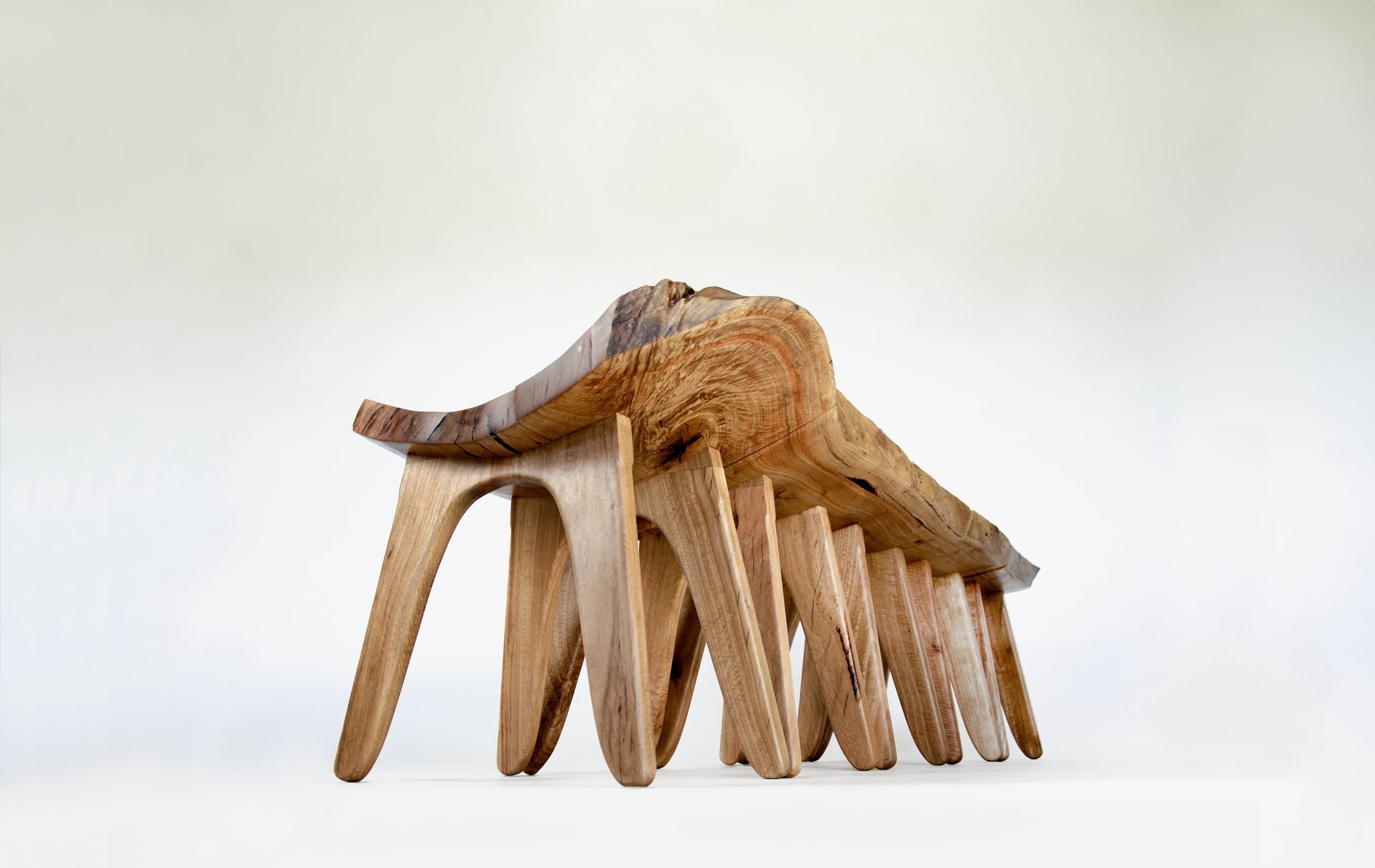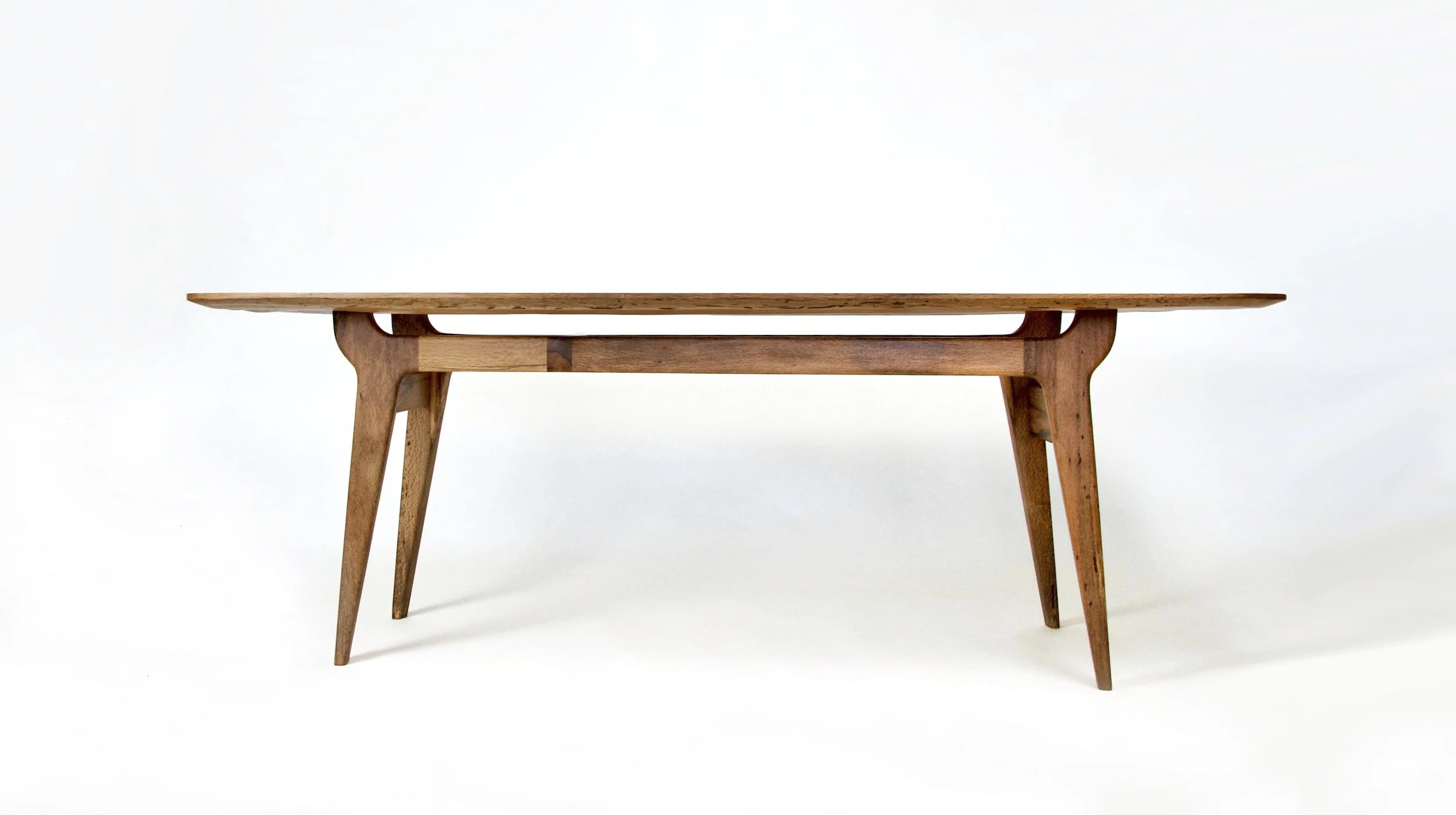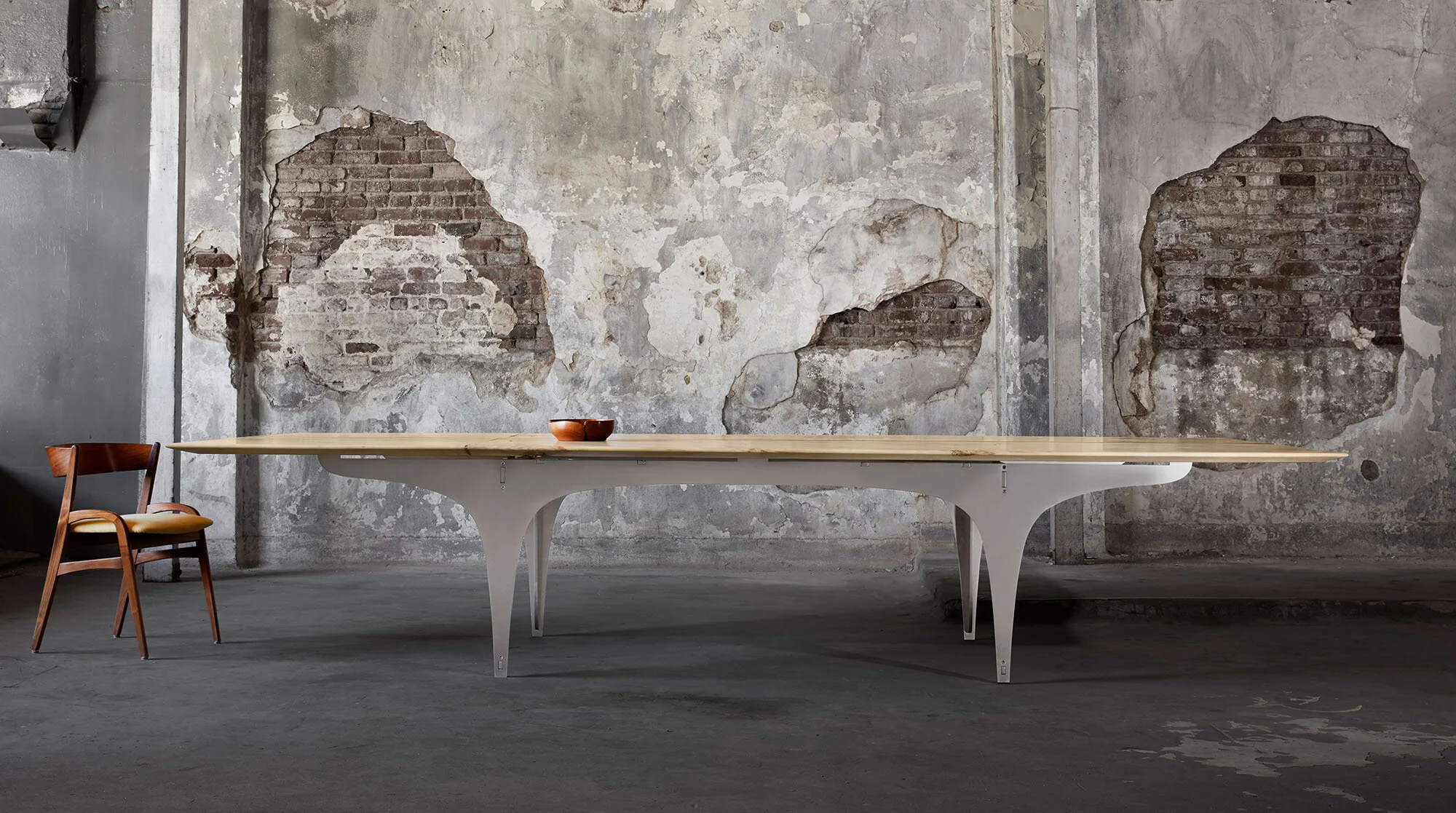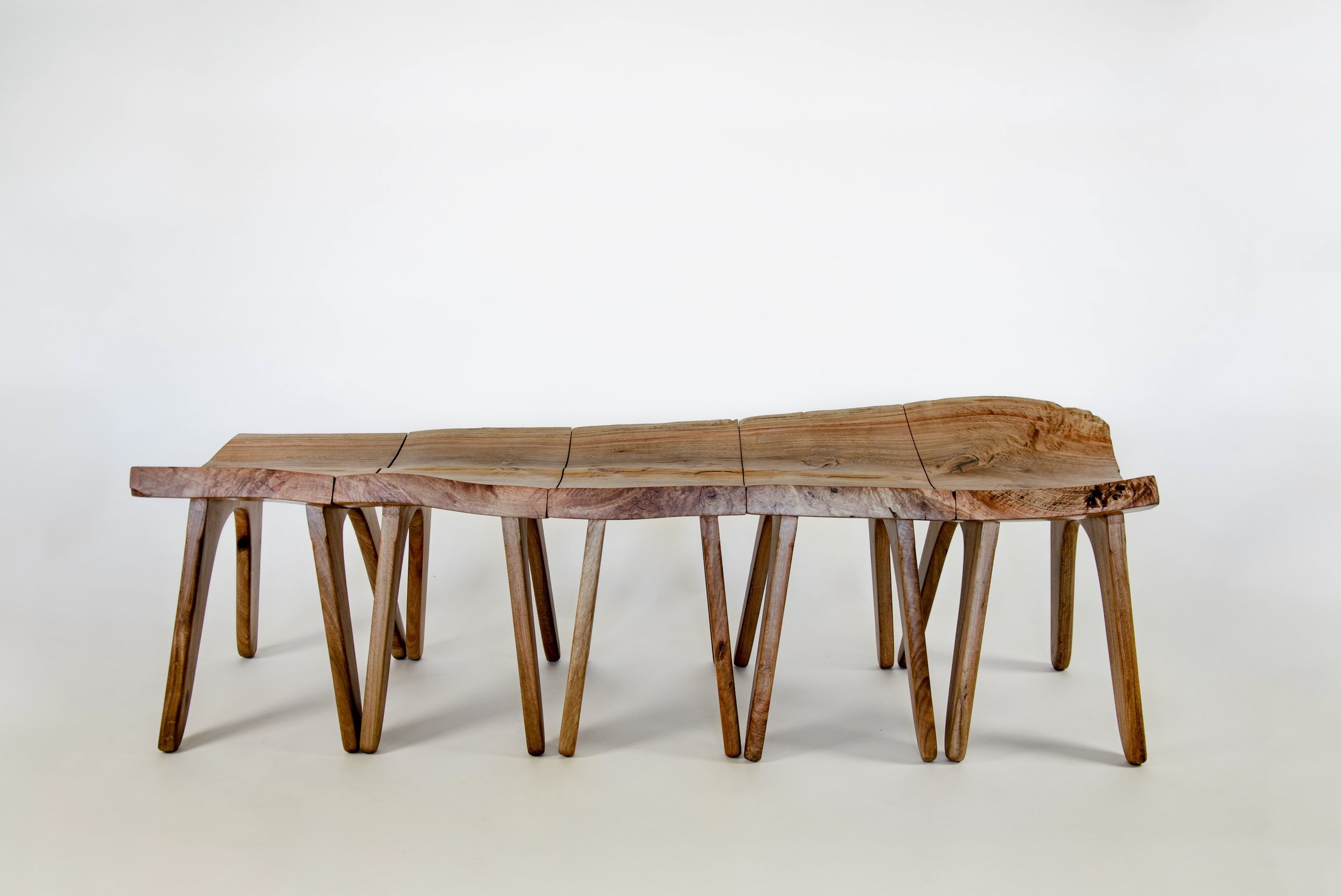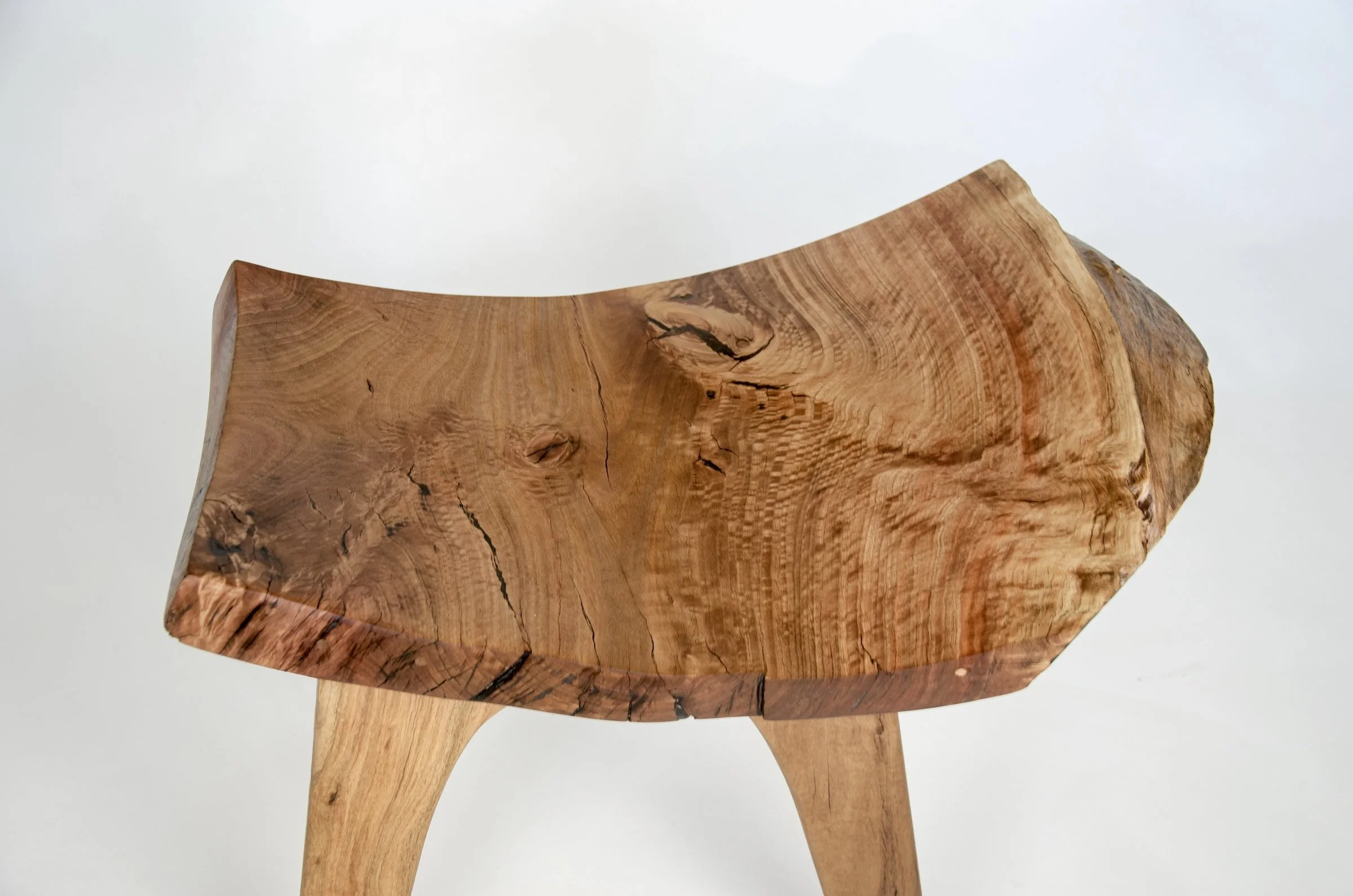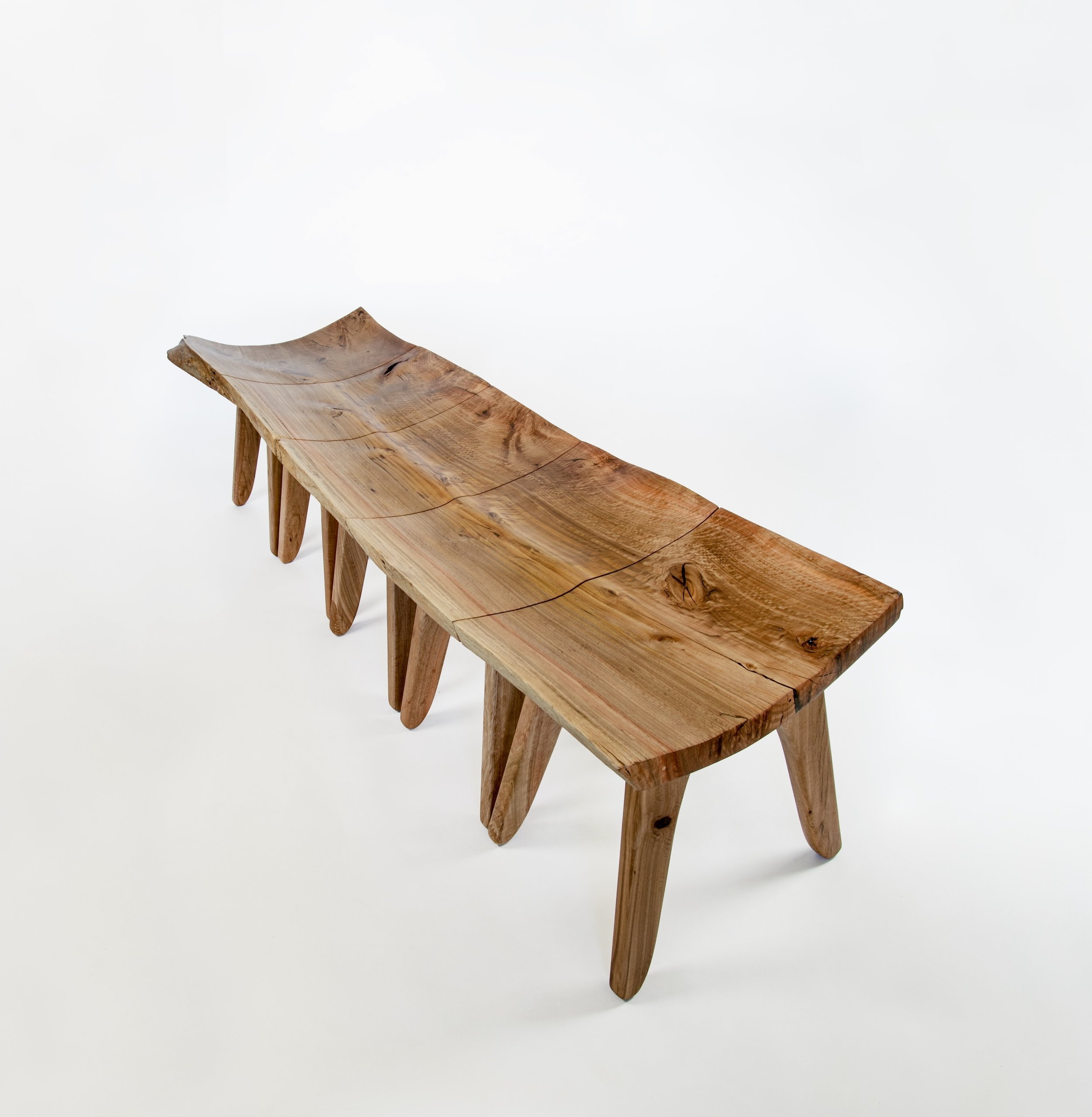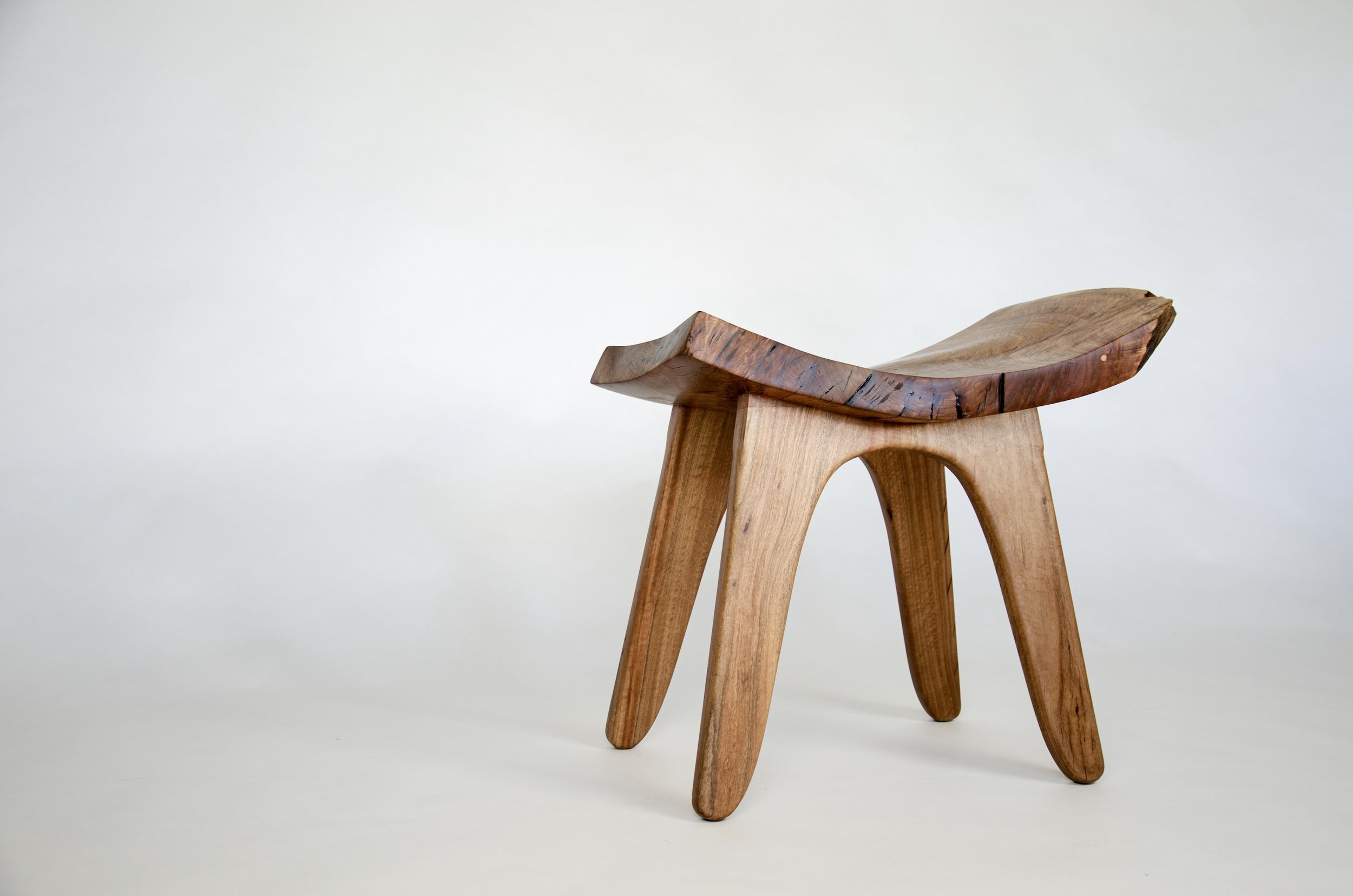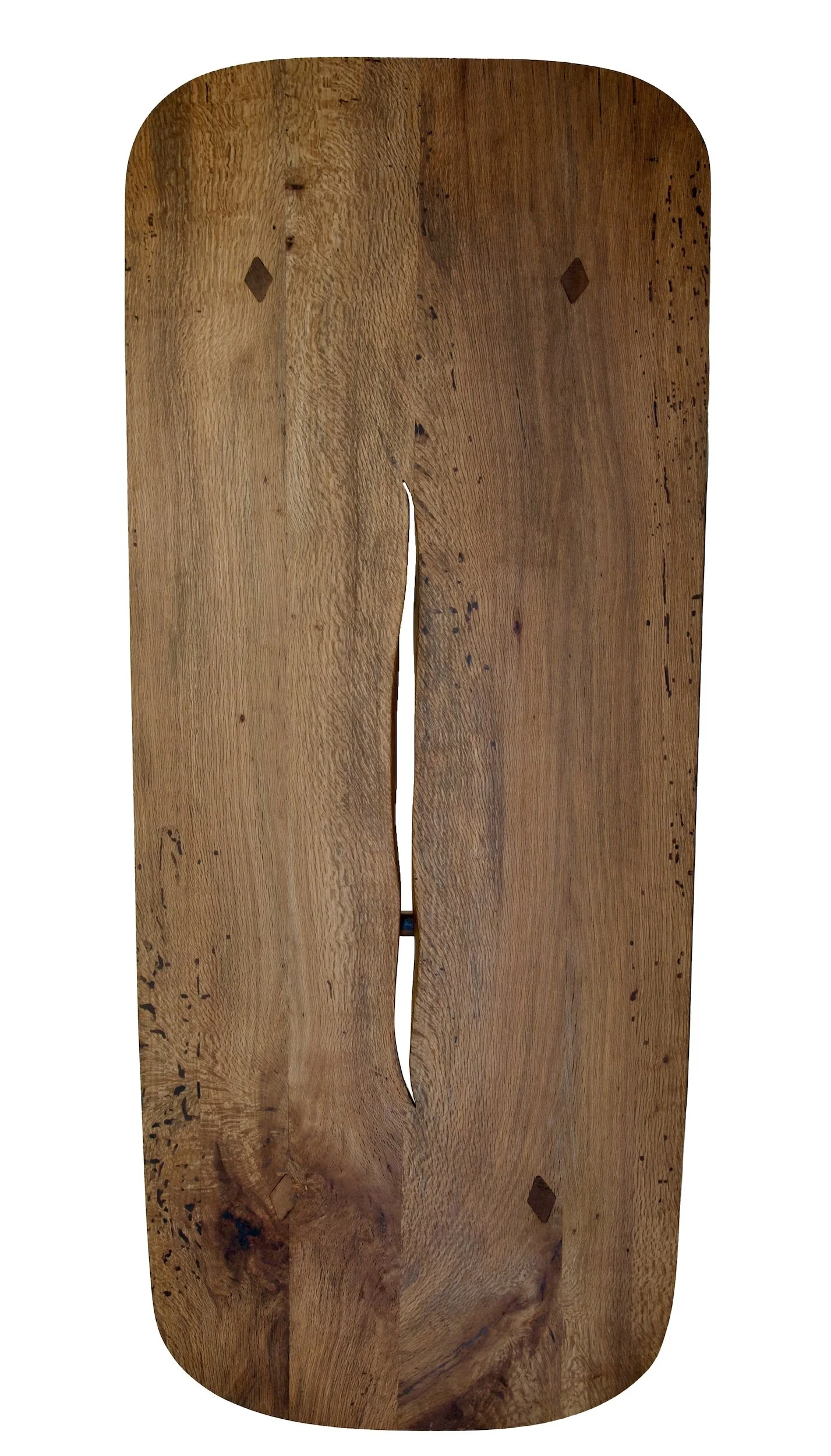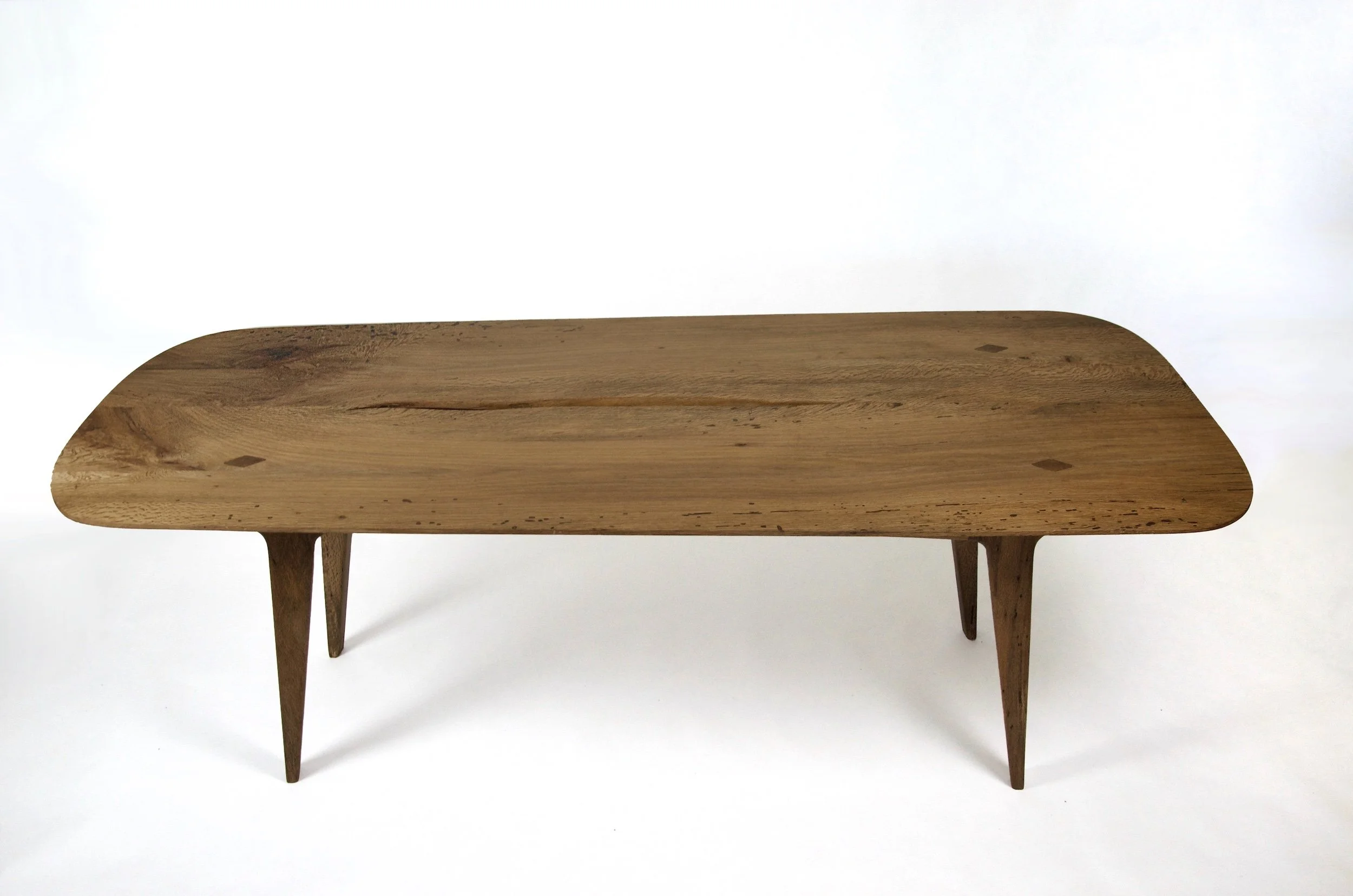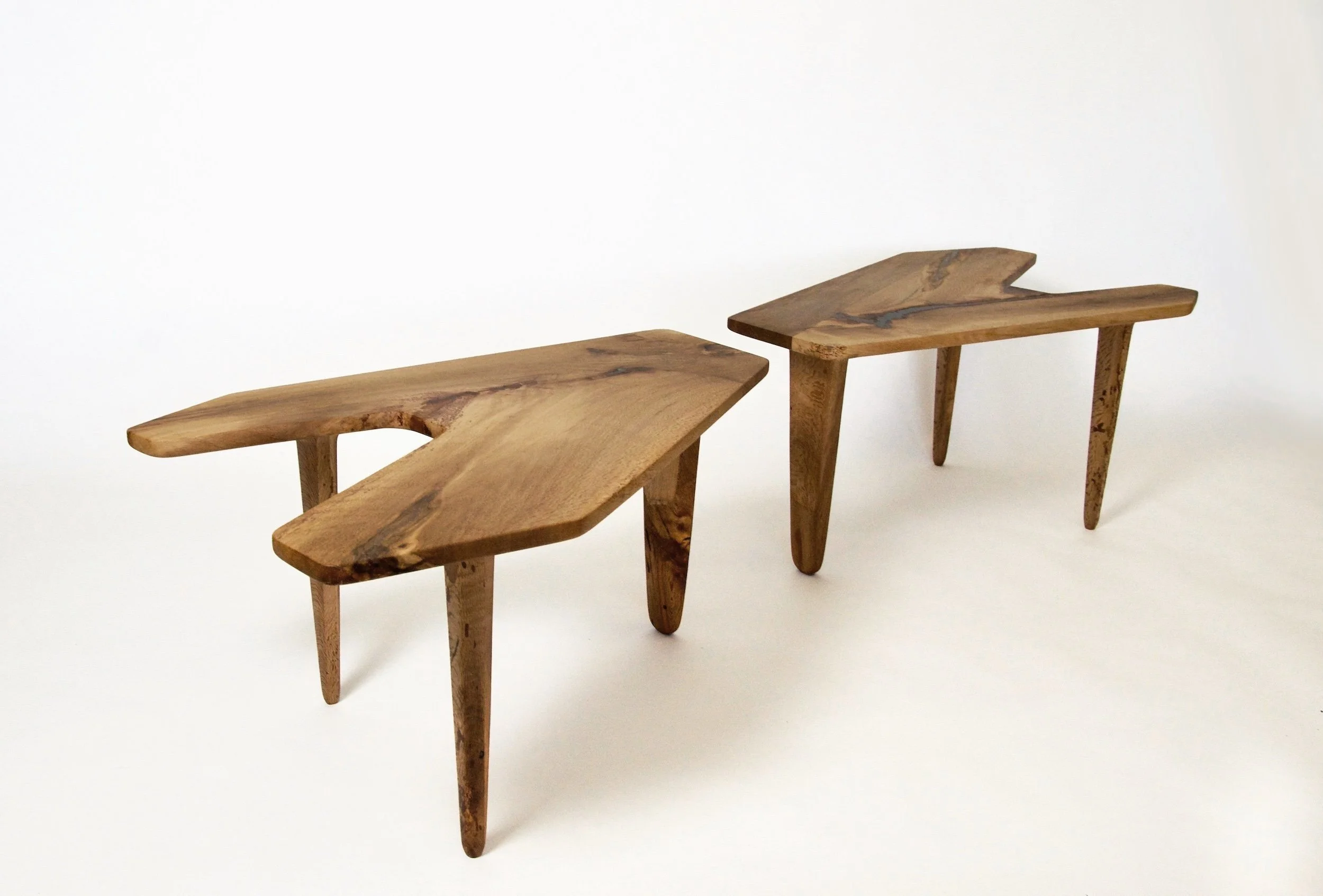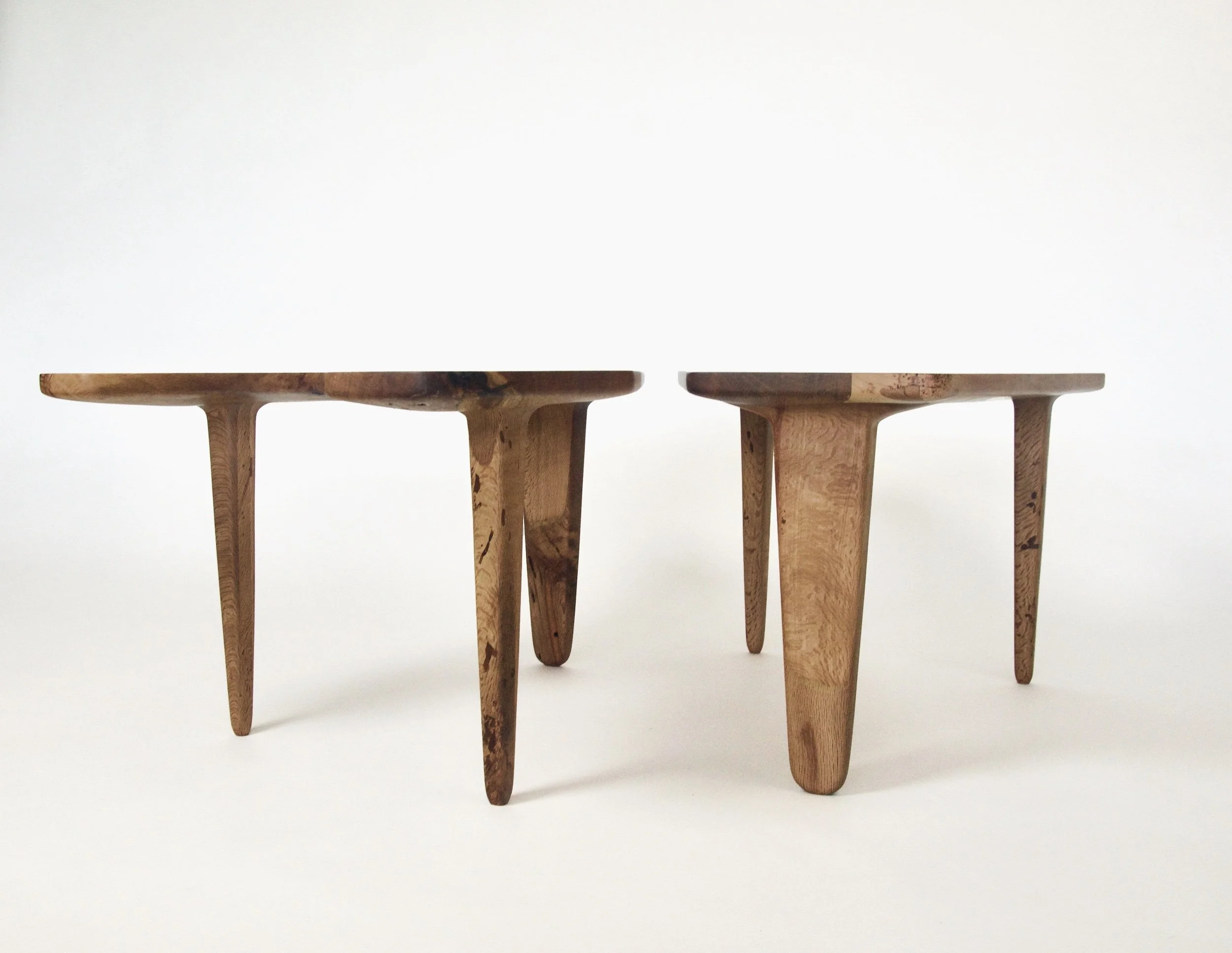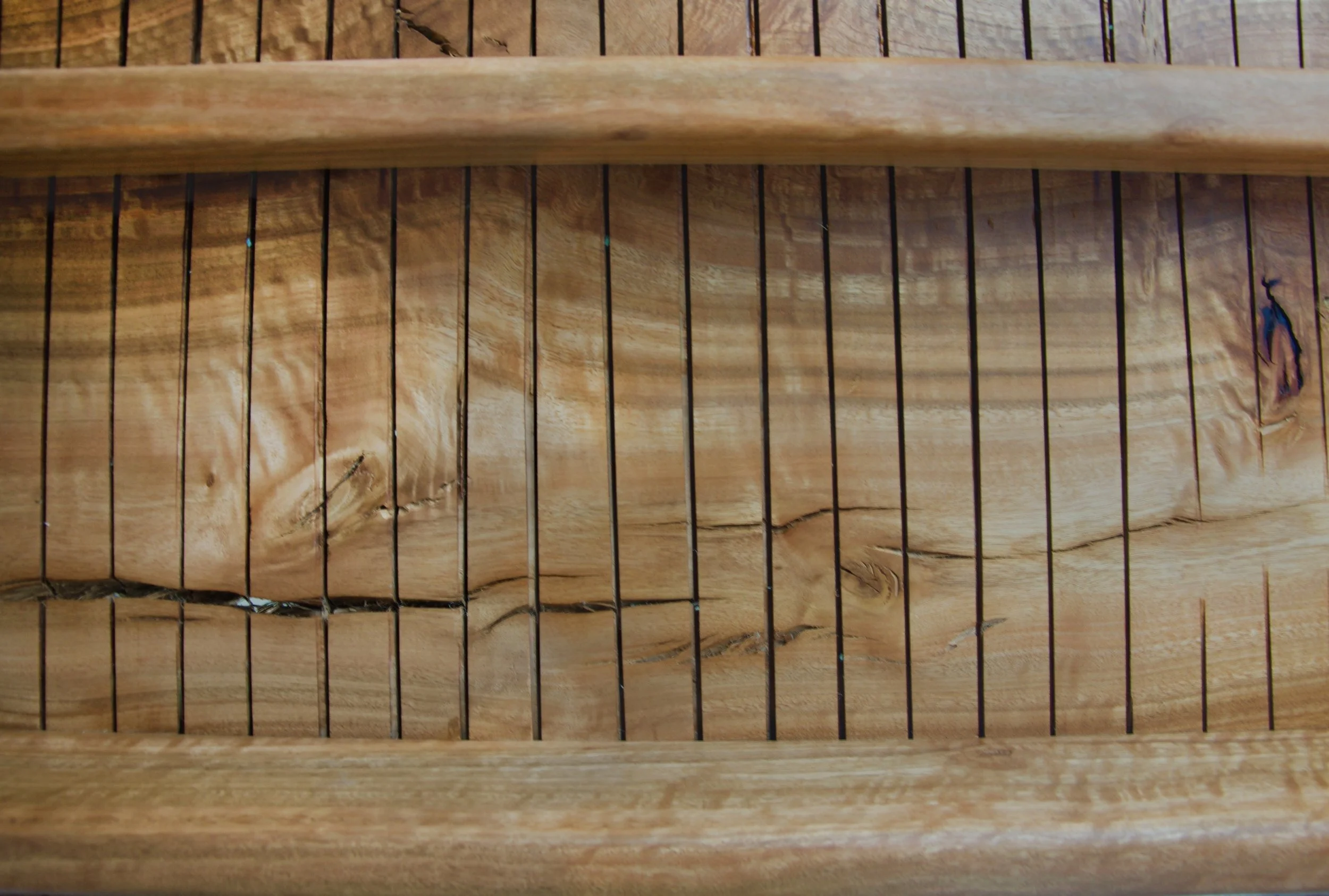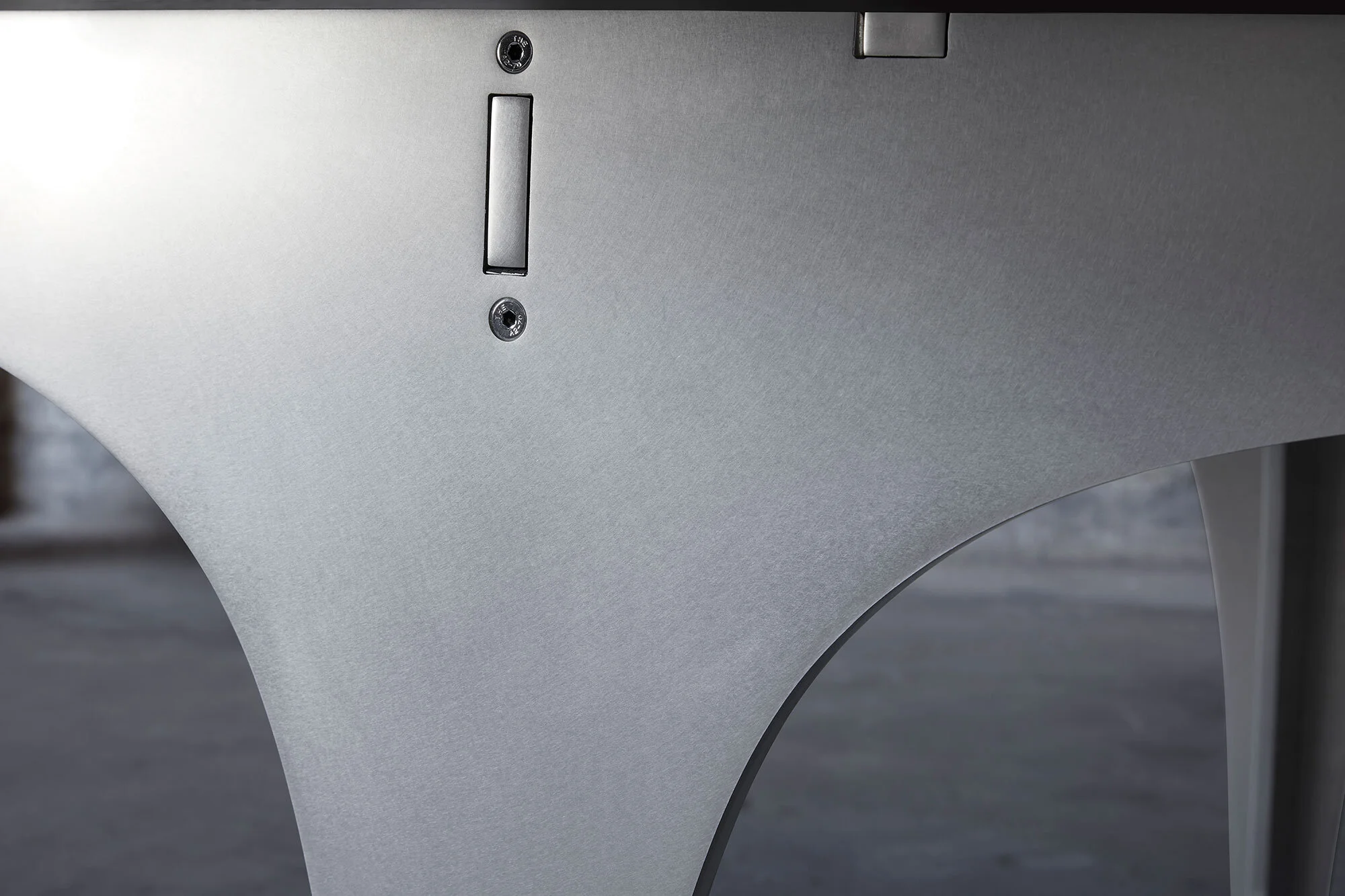After air drying this South Pasadena Oak street tree for two years, we selected it as the material used in making Diane’s commissioned table. After it fell, we called in the mobile band saw, sliced it into planks on the edge of Grand Avenue, and took it to my favorite storage place, otherwise known as…my driveway.
We decided to work with Marty of Shalders’ Fine Carpentry as our collaborating furniture maker. There was significant warpage during drying, so we selected the best pieces, then Marty ripped them down the middle, butterflied them like a piece of chicken, laid them flat, and hand-milled them with a jig and router. It was a labor intensive process, but necessary to maintain maximum thickness. We finally rejoined the slabs.
The table is more finely crafted than a typical live edge plank, but retains a rustic look, due to the checks and splits that give the planks their character. We decided to use two planks instead of three, even though it creates a large void in the table center. We chose a piece with unique grain to fill this void. Diane didn’t want to lose ANY of the beautiful grain, but I broke it to her that we had to break some eggs to make the omelette. We trimmed the table to the desired length and removed some lumber to get the Yin to join with the Yang.
During the design process, we had to resolve several challenges. We had to make some choices regarding the shape of the top. We normalized the edge into a smooth curve and slicing off the little protruding bumps. Diane decided the table was a little bit too long for her space so we cut 6” off of each end to reduce it from 9' to 8’4”.
We eased the corners using the radius of a nearby paint can, and eased the ends into broad gentle curves. This table has reverse curves at the edges, which gives it an hourglass type shape.
The next challenge was choosing a leg system to support the table. We sat on the idea for three weeks until I came up with the concept of a two-part splittable table, where the Yin and the Yang can be separated and used as console tables. We were originally going to make the legs out of a different wood, but decided to use wood from the same tree. We laminated lumber for the remaining planks to create the heavier stock needed for the leg system.
The cool thing about the table design process is that you take one step and that presents a few problems to solve, and then the next step presents more design solutions and the next step and so on and so on. We were truly chasing the nature of the wood and the problems that arise because of its uniqueness and that’s what makes this table special.
We decided to make a prototype of the leg structure out of 2x6 framing lumber. The leg system resembles a wishbone and takes its stylistic cues from the prior oak dining table and coffee table. The legs are placed for maximum stability and to provide the right clearance at the seating positions. We really like the leg design and may use it as a template for more tables in the future.
Photos by Lisa Romerein
Sold
View Price Index
